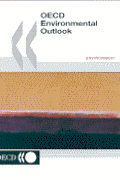At the beginning if the 21st century, OECD countries are taking stock of their natural resources and evaluating the damage that is being done to the environment. They are also examining the actions that can be taken to ensure a clean, healthy and productive environment to pass on the future generations.
The OECD Environmental Outlook provides economy-based projections of environmental pressures and changes in the state of the environment to the year 2020. Drawing on an analysis of the economic, social and technological forces driving environmental change, this report provides projections of environmental pressures from key economic sectors (agriculture, forestry, fishery, transport, energy and selected industry sectors) and changes in the state of the environment for selected environmental issues (freshwater, biodiversity, climate change, air quality and waste). Cross-cutting issues are also examined, such as human health and the environment, the social and environmental interface, and resource efficiency. Finally, the OECD Environmental Outlook assesses the underlying institutional frameworks for the environment, and identifies and examines the economic and environmental effects of concrete policy packages to address the main problems identified. The book draws on extensive economic and environmental data and analysis of the OECD; the Pressure-State-Response framework forms the backbone of the analysis.
The key findings of the report are summarized using traffic lights, These include a number of “red light” issues which need to be addressed urgently by OECD countries, but also “yellow lights” which require further investigation or some action, and green lights for which OECD countries should proceed with caution. The “red lights” identified for OECD countries regarding the state of the environment include climate changes, urban air quality, biodiversity, fish stocks, groundwater quality and chemicals in the environment.
